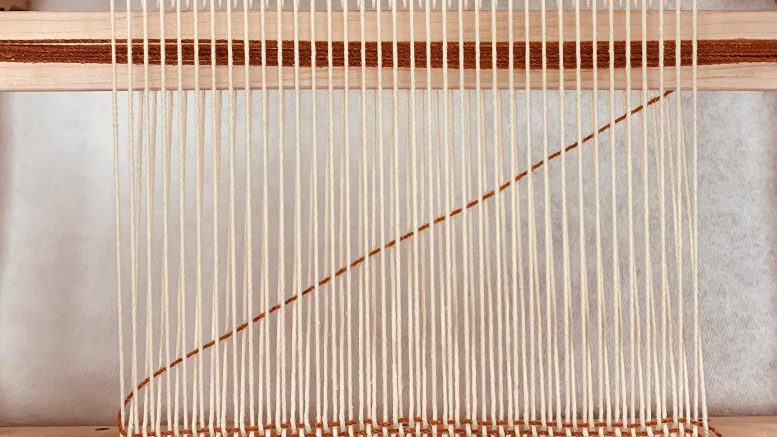
Yarn-shaped supercapacitors created by NC State researchers in the Wilson College of Textiles. Credit: Nanfei He
With the rising fascination for wearable technology, there’s been a parallel boost in efforts to develop energy-storage solutions that can be integrated into fabrics. Scientists at North Carolina State University have discovered the “sweet spot” where a threadlike energy storage technology, known as a “yarn-shaped supercapacitor” (YSC), yields the highest and most efficient flow of energy per unit length.
“When it comes to the length of the YSC, it’s a tradeoff between power and energy,” said Wei Gao, corresponding author of a paper on the work and an associate professor of textile engineering, chemistry, and science at NC State. “It’s not only about how much energy you can store, but also the internal resistance we care about.”
Specifically, the researchers found that YSCs in the 40-60 centimeter range provided the best overall energy output.
Study Findings and Methodology
Previous research on YSCs has delivered varied and sometimes conflicting results when it comes to length-dependent energy output. The aim of the new study, Gao said, was to provide a consistent, comprehensive model to explain changes in YSC performance across a wide range of lengths.
To do this, researchers first fabricated several YSCs using pairs of activated carbon-incorporated electrode yarns and a gel electrolyte. Nylon threads were wrapped around each yarn to prevent shorting, and then the two electrodes were plied together and coated further with the same gel electrolyte. Researchers created these YSCs in segments ranging from 10 to 300 cm long and then ran electrical currents of varying frequencies through them. This allowed them to measure two characteristics; internal resistance, which measures how much electrical current is impeded while trying to move through a battery, and capacitance, which is the ability to store electrical energy.
The researchers found that capacitance generally increased linearly with lengths between 10 and 60 cm, after which gains in capacitance slowed significantly as length increased. The results were also influenced by the frequency of the electricity – or the rate at which the electrical current oscillates. Depending on the electrical frequency of the current, the YSCs would see diminishing gains in capacitance up to the 300 cm in length, though some plateaued at around 150 cm. Mathematical models also showed that YSCs between 40-80 cm exhibited the lowest internal resistance, which led researchers to determine that 40-60 cm was the most efficient length overall.
Potential Applications and Future Directions
Lead author Nanfei He, a postdoctoral research scholar at NC State, said the study is part of a larger effort aimed at creating YSCs that can be integrated into clothing.
“Identifying the optimal length of YSCs is critical for their effective utilization, guiding the development of strategies for seamless integration into fabrics,” He said.
Funding for the study came from the U.S. Army Research Office, and Gao said she imagines early applications for YSCs will be mainly military-focused.
“Imagine you can make a yarn, just a regular textile yarn, that you also make into a battery,” Gao said. “You can basically hide it in your clothing. If you can do that, you can add so many more functions to your clothing.”
More work needs to be done before YSCs become viable for practical applications.
“The technology is not mature yet, and that’s why there is so much funding and so much interest in developing it,” Gao said. “We can make yarn batteries, but can we make them durable, reliable, and safe? Can we make them washable? If you’re going to put it on your body, there are so many other challenges besides its energy-storage functions. Right now we’re focused on the reliability aspect, making sure that if you twist and move the yarn around it will still work. That plus safety are the main issues, and I think once we achieve those two it will broaden the scope of their applications by a lot.”
Reference: “Modeling of yarn-shaped supercapacitors – Unraveling its length dependent output” by Nanfei He, Xi Zhang, Junhua Song, Feng Zhao and Wei Gao, 18 January 2024, Journal of Power Sources.DOI: 10.1016/j.jpowsour.2024.234067
The paper was co-authored by Nanfei He, a postdoctoral researcher at NC State, Xi Zhang, a researcher with the Yancheng Institute of Technology, and Junhua Song and Feng Zhao of Storagenergy Technologies, Inc.
The work was done with support from the U.S. Army Research Office under grant W911NF19C0074 and W911NF18C0086.
Source: SciTechDaily